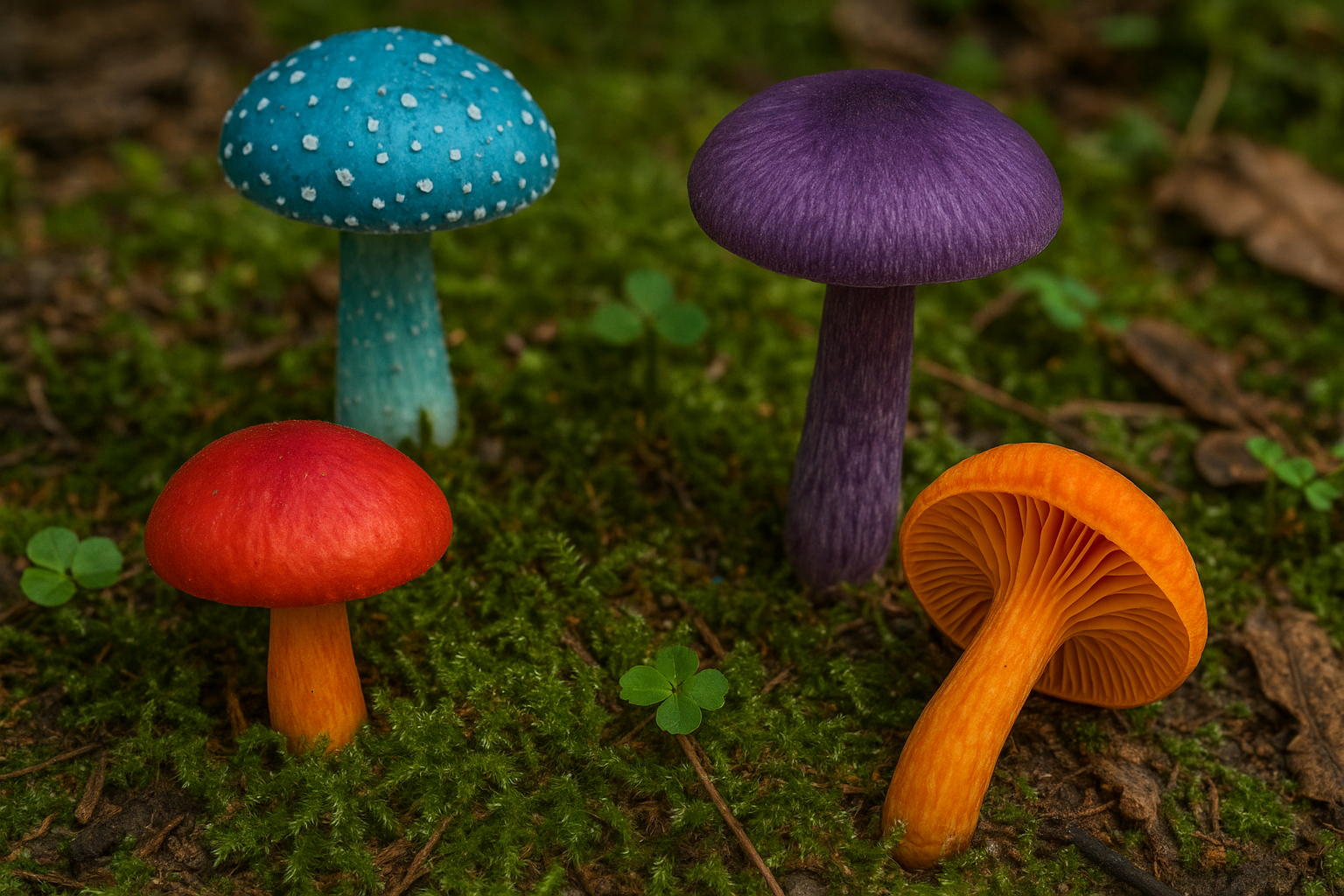Mushrooms aren’t just white or brown blobs popping out of forest floors—they’re a vibrant expression of nature’s creativity. From deep purples to fiery oranges and electric blues, colorful mushrooms captivate scientists, foragers, and photographers alike. But why do mushrooms display such bold hues? Are they safe to touch or eat? In this article, we delve into the world of colorful mushrooms, their science, uses, and symbolism, offering a fresh perspective you likely haven’t seen before.
Why Are Some Mushrooms So Colorful?
The coloration of mushrooms is often a result of their chemical composition. Unlike flowers that use color to attract pollinators, mushrooms use pigments for:
- Protection: Pigments can serve as a defense against UV light or microbial attacks.
- Warning Signals: Bright colors often signal toxicity, deterring animals from consuming them.
- Camouflage or Attraction: Some fungi use color to blend into or stand out in their environments to spread spores effectively.
Key Pigments Found in Mushrooms
| Pigment | Color | Found In |
|---|---|---|
| Anthraquinones | Red/Orange | Dermocybe spp. |
| Psilocin & Psilocybin | Blue | Psilocybe spp. |
| Betalains | Purple | Amethyst Deceiver |
Top 7 Most Strikingly Colorful Mushrooms
- Amethyst Deceiver (Laccaria amethystina)
With a vivid violet hue, this small mushroom thrives in deciduous woodlands and is surprisingly edible. - Fly Agaric (Amanita muscaria)
The iconic red cap with white spots often associated with fairy tales is toxic but stunning. - Indigo Milk Cap (Lactarius indigo)
Found in North America and Asia, it bleeds blue latex when cut and is mildly edible. - Green Elfcup (Chlorociboria aeruginascens)
Known for staining wood turquoise, it’s used in woodworking as “green oak.” - Cortinarius semisanguineus
Rusty red gills under a brownish cap make this species visually arresting and photogenic. - Mycena interrupta
Also called the “Pixie’s Parasol,” it’s an electric blue mushroom found in New Zealand and Australia. - Jack O’Lantern (Omphalotus olearius)
Emits a faint bioluminescence in the dark—glowing green gills under orange caps.
Are Colorful Mushrooms Safe?
Colorful mushrooms often invoke curiosity, but caution is essential. Many vividly colored mushrooms are toxic or hallucinogenic. Here are general tips:
- Don’t rely on color alone to determine edibility. Some deadly mushrooms look harmless and vice versa.
- Always consult local guides or experts before touching or consuming wild mushrooms.
- Photograph, don’t pick rare mushrooms to support conservation.
Edibility Guide
| Mushroom | Color | Edibility |
|---|---|---|
| Fly Agaric | Red with white spots | Toxic |
| Indigo Milk Cap | Deep Blue | Edible (mild) |
| Jack O’Lantern | Bright Orange | Poisonous |
| Amethyst Deceiver | Purple | Edible |
Medicinal and Ecological Value
Beyond aesthetics, colorful mushrooms contribute significantly to ecosystems:
- Decomposers: They break down organic material, recycling nutrients into the soil.
- Medicinal Research: Compounds from blue and purple fungi are under study for antibacterial and neurogenic effects.
- Bioindicators: Their presence can indicate environmental health or pollution levels.
The Cultural Fascination with Colorful Mushrooms
From fairy tales to video games, mushrooms—especially the bright ones—have captured human imagination. In cultures across the globe, they are featured in rituals, stories, and folklore. For example:
- Shamanic Use: In Siberian traditions, Fly Agaric was used for altered states of consciousness.
- Mythology: In Celtic lore, mushrooms marked fairy rings—portals to other worlds.
- Modern Pop Culture: Games like Mario feature red-and-white mushrooms as power-ups.
Where to See Colorful Mushrooms
If you want to witness these natural wonders firsthand, here are global hotspots:
- Pacific Northwest, USA – Rich in Indigo Milk Caps and Jack O’Lanterns
- New Zealand – Mycena interrupta is commonly found in beech forests
- European Deciduous Forests – Amethyst Deceivers and Fly Agarics thrive here
- Japan and China – Unique fungi such as blue and bioluminescent varieties
Tips for Photographing Colorful Mushrooms
Colorful mushrooms make excellent photography subjects. Here’s how to capture them:
- Use a macro lens to capture intricate gills and textures.
- Shoot in soft natural light—early morning or cloudy days are best.
- Photograph from multiple angles and include some environment for context.
- Bring a small spray bottle to gently mist the mushrooms for that fresh look.
Conclusion
Colorful mushrooms are more than just eye candy. They are ecological powerhouses, cultural symbols, and sources of scientific interest. Whether you’re a mycophile, a nature lover, or simply a curious soul, these vibrant fungi invite you to explore the hidden spectrum of the forest floor.
Keep visiting our website for the latest updates and information.
FAQs
Q: Are all colorful mushrooms poisonous?
A: No. While many are toxic, others like the Amethyst Deceiver and Indigo Milk Cap are safe to eat with proper identification.
Q: Why do mushrooms have bright colors?
A: Their colors may serve to warn predators, attract spore dispersers, or protect against UV light and microbes.
Q: Where can I see colorful mushrooms in the wild?
A: Look in damp forests, especially in regions like the Pacific Northwest, New Zealand, and European woodlands.
Q: Can I grow colorful mushrooms at home?
A: Some edible colorful species can be cultivated, but rare wild ones typically require specific forest environments.



